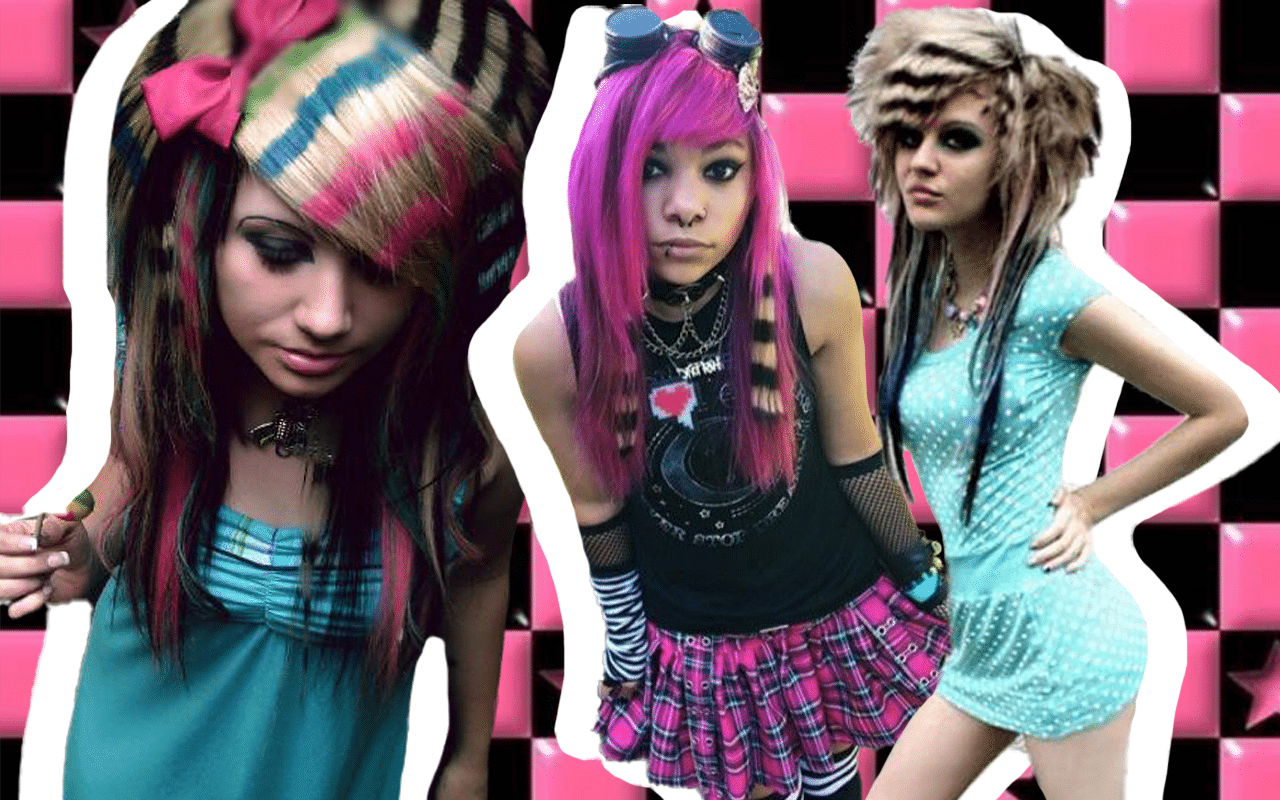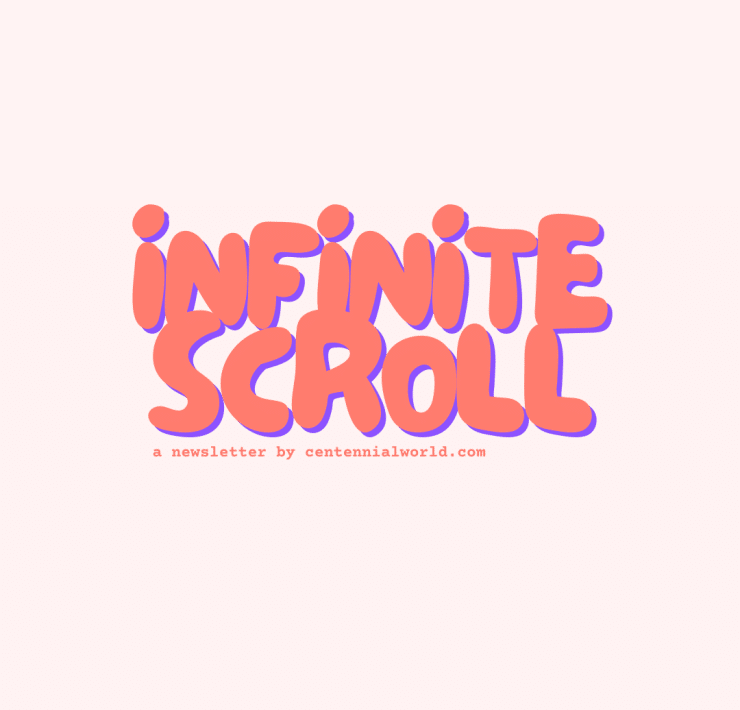
Spearheaded by Gen Z, we have witnessed a renewed obsession over everything and anything “2000s” in the past couple of years. Think, the reboot of TV shows like Gossip Girl; Olivia Rodrigo’s music video for ‘good 4 u,’ which references the 2000s horror film Jennifer’s Body; or even, influencers like Emma Chamberlain, rocking Y2K staples like low rise jeans and sequins. It’s fair to say that the resurgence of 2000s fashion and aesthetics has permeated every sector of today’s media landscape.
From likening TikTok e-girls to the “modern-day” Scene Queens, to claims that Billie Eilish is bringing back emo culture, it seems like noughties subcultures are also on the rise. But what even is scene anyway? And what prompted its revival relatively soon after its initial popularity?
What is a Scene Queen?
To truly understand the “Scene Queen,” we must consider the cultural zeitgeist in which they emerged. Take it back to the early 2000s: Juicy Couture tracksuits are the “go-to”, Paris Hilton is considered the epitome of fashion, and most importantly, Myspace is taking over the internet.
Myspace’s growth was unprecedented. After being founded in 2003, it only took one year for the site to hit one million unique visitors per month. As Myspace’s user base grew, so did the follower counts of some of its most popular creators. And so, the reign of the Scene Queen had begun.
If you are anything like me, Scene Queens are probably a little bit before your time — so, a quick history lesson is probably in order. The term “Scene Queen” referred to a group of (mostly) girls who skyrocketed to Myspace fame, thanks to their “scene” aesthetic. Some of the most iconic Scene Queens were Jac Vanek, Audrey Kitching, Hanna Beth and even, Jeffree Star. The tight-knit group was known for dating members of famous pop-punk bands, namely the boys from Panic! At The Disco and Fall Out Boy. With this, the Scene Queens’ personal lives quickly became a point of gossip and speculation for Myspace users. Scene Queens were essentially social media influencers (to put it in Gen Z terms).
Throwback Thursday… scene queen.. 2006.. 😂 pic.twitter.com/7gxqkzxFEy
— Hanna Beth (@TheHannaBeth) February 9, 2017
Known for their teased hair, rainbow “racoon” dye jobs and studded belts, Scene Queens did not shy away from bold colours and over-the-top edgy looks. While this may sound similar to emo fashion, the two aesthetics couldn’t have been more different. As Hatti Rex writes for Bustle, “The emo kids were a lot more brooding and wore way more black, whereas scenesters were excitable little rainbows who weren’t even necessarily into the same music, let alone wardrobe choices.” While these subcultures may have their differences, it is important to note that both scene and emo emerged as a challenge to mainstream beauty standards.
However, scene was much more than an aesthetic. With shared interests in video games and various pop-punk and electronic bands, scene subculture built a strong sense of community and helped like-minded people find each other. After Myspace’s downfall in 2007, Scene Queens and the corresponding subculture seemingly fell into the pop culture abyss.
The Return of the Scene Queen?
Over the past couple of years, TikTok, Instagram, YouTube, and even Reddit have witnessed a resurgence of scene subculture. As Bettina Makalintal writes for VICE, “MySpace died, but the scene didn’t: Scene kids and scene queens simply found new platforms.”
Scene’s social media rebirth gained traction in 2019, with the hashtag #twentyninescene making the rounds on TikTok. While the hashtag is not associated with a particular audio or trend, the videos show users embracing scene fashion and aesthetics. At the time of publication, #twentyninescene has accumulated 5.1 million views.
Other hashtags like #scenemakeup and #scenehair have amassed a combined 64.6 million views and counting. Under these hashtags, you’ll find self-proclaimed scene kids filming makeup tutorials for smokey eyeshadow looks and thick winged eyeliner. Some users have even taken to the platform to share their DIY haircuts.
@uglythey THE WAY I ATE THIS THO WHATTTT OMFG #scene #alternative #scenemakeup #EatEmUp #poseathome #InTheHouseparty #cookinghacks
♬ Pretty Rave Girl – S3RL
@madmolly This is a sign cut your hair scene and join the RAWR XD cult. #SummerLooks #alternative #scene #scenequeen #scenekid #scenegirl #scenehair #emohair
♬ original sound – 💎MAD Molly💎
The revival of scene culture has culminated in its own Gen Z offshoot known as the #Rawring20s. As you may have already guessed, the name is a reference to the iconic scene slogan, “Rawr means I love you in dinosaur.”
With 710.3K followers at the time of publication, TikTok user @MadMolly has become one of the most prominent creators within the “Rawring 20s” niche. Scrolling down her profile, you will find all different kinds of TikToks, ranging from transition-style transformations to lip-syncing videos. On her motivation behind posting on TikTok, she told VICE, “I would like to help people that are younger that don’t understand the difference between scene, emo, and e-girl/e-boys because it was a part of history in fashion and music and it may become popular again in the future”.
“POV it’s 2008 and you’re thinking about posting this to MySpace,” the caption reads as Molly films herself dancing in front of her mirror. By using mainstream TikTok trends and placing them in the context of the scene aesthetic, Molly epitomises the crossover between Gen Z and scene culture.
@madmolly POV it’s 2008 and you’re thinking about posting this to MySpace #rawring20s #scenequeen
♬ Freaxxx – Brokencyde
What inspired the Gen Z scene revival?
Nostalgia has long dominated the fashion world. For the last decade, 90s trends have ruled the fashion cycle, thanks to Millennials. With Gen Z coming into our own, we seem to have brought the nostalgia of the early 2000s with us.
Born in the wake of 9/11, growing up through a global recession, and graduating high school and college in a post-pandemic world, Gen Z is simply seeking stability on increasingly shaky grounds. And for this demographic, the 2000s represents a time of blissful ignorance.
The rise of TikTok’s e-girl (and e-boy) in 2019 also helped pave the way for the resurgence of scene culture amongst Gen Z. Known for their online presence and love of video games, the e in “e-girl” stands for electronic. While the term has been around since 2009, TikTok has given it a whole new meaning.
Likening the e-girl to the “modern-day” Scene Queen, “both were created as a counterculture to the mainstream aesthetic and standards of beauty” explains Paige Leskin for Business Insider. Opting for split-dyed hair, graphic liner, and pink blush, e-girls differ aesthetically from their predecessors. Nevertheless, TikTok e-girls and e-boys are the first internet subculture to build something that feels subversive in a similar way to the Scene Queens of the early 2000s.
Interestingly, YouTube fashion commentary channel ModernGurlz attributes the Gen Z scene comeback to COVID-19. With young people forced into lockdown due to the pandemic, many have turned to social media to find a sense of community with like-minded people; and for some Gen Z-ers, scene subculture has served as a sense of security and escapism.
Aesthetic-wise, scene offers a grungy and edgy alternative to the mainstream. According to ModernGurlz, “(scene) is more adventurous, experimental and somewhat apocalyptic in comparison to others like cottagecore or the coconut girl. In a way, it appeals to our innate nihilism and pessimism and desire for rebellion”.
Ultimately, for many Gen Zs, months of being stuck indoors took away an important means of self-expression; clothes and fashion. As Dr. Dawnn Karen (known as the world’s first fashion psychologist) told Fashionista, “People are re-evaluating what they want to wear, maybe for the first time ever since they were kids”.
With this, the way we experience fashion has changed; the fears of wearing an “out-there” outfit that may get some stares have disappeared, and Gen Z is ready to embrace our identity through our fashion aesthetic.
Bring on the #Rawring20s!

